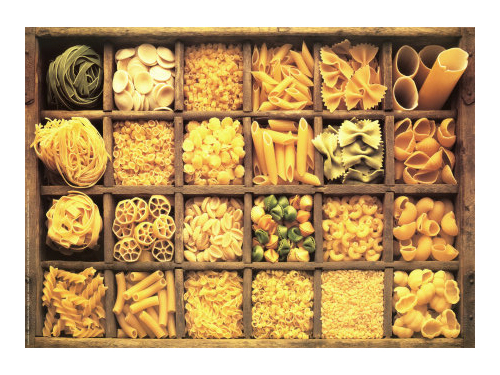We made the pasta dough and rolled out the dough with a pasta maker. Then we cut fettuccine noodles. Of course we enjoyed our work by tasting the noodles, but not before comparing them to store bought fettuccine and discovering what boiling water looks like.
The children were so fascinated and excited about this process that many of our families have dusted off the pasta makers they had in their attics and tried it at home. The home/school connection that this type of learning inspires is incredible. Even for those that do not make their own pasta, the children now have an excitement when they are served pasta at home and are having discussions about it with their families. This past week the children hunted around their homes for pasta equipment. Everyone had a pot and a colander, and then it varied. The children are eager the share with their classmates what they have discovered at home.
We put playdough and the pasta tools in the dramatic play center this week. It was incredible today to watch the children recreate all of the steps needed to make the pasta, from the flattening to the separating of the noodles on a dish towel, to cooking them in a pot. They are "practicing" what they have learned from their "research", making sense of it in their own ways.
Other than a cheese grating area in preparation for making macaroni and cheese later this week, my centers do not focus on pasta.
The children interested in following their wonderings can do so, as in these photos:
This little girl found something in a book she wants to share with the class. "Where are the sticky notes?" she calls out trying to tag a page that she has discovered in her "research." I had posed the problem earlier in the morning that we didn't have a recipe for macaroni and cheese and we want to make it this week. Tomorrow she will share this, which may help us to answer one of our questions or may very well lead us to more questions.








































